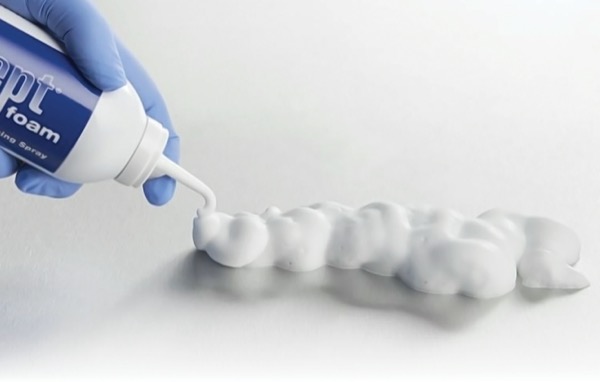By Gina Shaw
Originally published by our sister publication, Gastroenterology & Endoscopy News
Use of foam spray on flexible endoscopes that have not been reprocessed immediately could serve as an alternative to the delayed reprocessing protocol involving prolonged soaking, suggested authors of a study presented at the 2021 annual meeting of the Society of Gastroenterology Nurses and Associates. But other experts are unconvinced, noting that this approach doesn’t fall within endoscope manufacturer instructions for use.
Endoscopes must proceed to reprocessing within one hour after patient use to prevent biofilm formation, but delays in precleaning can occur due to inadequate staffing or in after-hours emergency cases, when the endoscopes are left for proper reprocessing the next business day. When this happens, most manufacturer instructions for use stipulate a six- to 10-hour prolonged soaking as part of a delayed reprocessing protocol. But the investigators, from the Department of Endoscopy at Ng Teng Fong General Hospital in Singapore, noted that this process can be difficult to employ during off hours.
They undertook a mini prospective study on the effect of a foam spray (Intercept, Cantel) on flexible endoscope microbiological surveillance culture (MSC) in Ng Teng Fong’s endoscopy unit from August 2020 to March 2021 (poster I04). In the “spray arm” of the study, the scopes (gastroscopes, double luminal therapeutic endoscopes, duodenoscopes and linear echoendoscopes) were encapsulated in the foam within one hour after patient use. The control arm used a delayed reprocessing protocol with extended soaking. Scopes in both arms subsequently underwent extensive channel brushing and were flushed with detergent, rinsed and put through automated high-level disinfection. Scopes that had been used in infectious cases underwent double high-level disinfection.
After culturing, the investigators found similar rates of contamination (10 or more colony-forming units or any gram-negative rods) between the two groups. Three of 65 scopes in the spray arm (5.34%) were positive for contamination, compared with three of 61 scopes in the control arm (5.69%).
However, some differences were noted when the data were broken down by scope category. Although contamination rates in linear endoscopes were similar in both arms (14.3% for spray vs. 13.6% for control; odds ratio [OR], 1.17), contamination was more likely in the spray arm for nonlinear scopes (3.57% vs. 0%; OR, 1.64).
This finding “could be associated with the small sample size in this study,” the authors noted. “Non-linear scopes are more frequently used than linear scopes, which might increase positive MSC results and biofilm formation.”
The investigators noted that as expected, the foam was “able to break down biofilms,” but they stressed the importance of endoscopes being reprocessed “immediately after patient use.”
Amiee Mingus, RN, BSN, a vice president of clinical operations at PE GI Solutions, which oversees operations at 60 gastroenterology surgery centers in 15 states, said that whether or not an endoscopy facility uses Intercept or one of the other foam spray products available, manufacturer instructions for use must still be followed. “First and foremost, delayed reprocessing is something you should avoid at all costs. But if that isn’t possible, using a spray doesn’t cut out any of the steps you have to follow in terms of the manufacturer’s protocols for delayed cleaning,” she said. “Foams and gels have been around forever and have been commonly used in surgical procedures for surgical instruments that have to sit around waiting for the surgery to be completed. It’s a natural progression that this would come around to scopes.” If you follow the “instructions for delayed reprocessing, that has been demonstrated to work equally well whether or not you use the foam. And if you follow the instructions for use as written, you’re not only performing the right steps to do the right thing for patient safety; you’re also not voiding your warranty and exposing yourself to liability,” Ms. Mingus said.
“If this or another product got manufacturer support, we would use it,” noted Rob Puglisi, a vice president of operations for PE GI. “But, if any of our centers felt they had to take an interim step like this, I would caution them to slow up the processes of the day to ensure they could follow protocols.”


